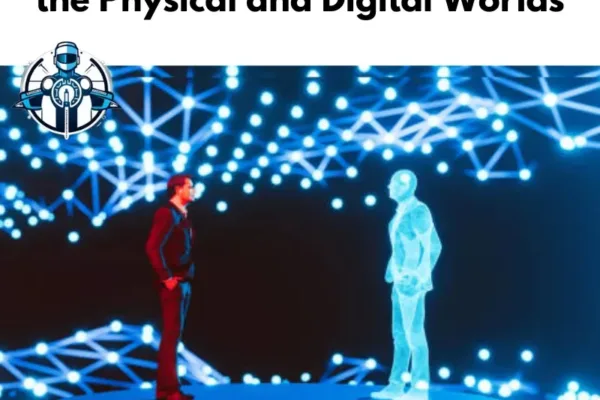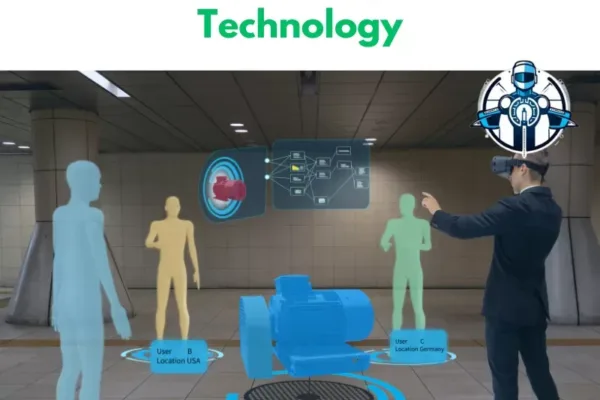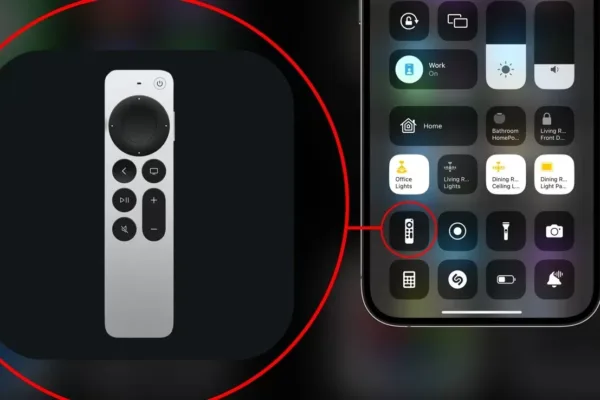Key Points
- Quantum computing uses quantum mechanics to solve complex problems faster than classical computers, with research suggesting significant potential in cryptography and optimization.
- It seems likely that quantum computing will impact industries like finance, pharmaceuticals, and logistics, though the evidence leans toward it being complementary to classical computing for now.
- The history includes key milestones like Richard Feynman’s 1981 proposal and Google’s 2019 quantum supremacy, with ongoing advancements in qubit technology.
Listen to our Podcast: What is Quantum Computing? A Complete Guide (2025)
Introduction and History
Quantum computing began as a small idea when scientists first studied the behavior of tiny particles. Researchers like Richard Feynman and David Deutsch were among the first to suggest that the way atoms work could be used to make computers that solve problems in a different way. Their early work laid the basic rules that help us understand how quantum computers may work.
Over time, many experts in physics and computer science built on these ideas. Universities, research labs, and top companies joined forces to study and develop the technology. In recent years, investment in quantum technology has grown by over 50% in the last five years.
The global quantum computing market is expected to grow from $1,160.1 million in 2024 to $12,620.7 million by 2032, with a CAGR of 34.8%. It started getting serious attention in the 1980s when scientists like Richard Feynman suggested that computers based on quantum mechanics could simulate nature better. A big moment came in 1994 with Peter Shor’s algorithm, which showed quantum computers could break codes much faster.
In 2019, Google claimed “quantum supremacy” with their Sycamore chip, solving a problem in minutes that would take classical supercomputers billions of years. Today, companies like IBM, Google, and Microsoft are pushing forward, with IBM unveiling a 1121-qubit processor, showing how fast this field is growing.
Governments and private businesses are investing a great deal in research and real-world applications. This means that quantum computing is moving from theory to tools that help with tough tasks like code security, finance simulations, and modeling molecules in medicine.
What is Quantum Computing?

Quantum computing is a new way of processing information that uses the small rules of nature. Instead of bits that can be only 0 or 1, quantum computers use special units called qubits. Qubits can hold the value 0, 1, or even a mix of both at the same time. This mix is known as superposition, a core idea from quantum theory. Another important idea is a special quantum linking that connects qubits. This linking helps quantum computers work on many tasks at once, giving them great computational power.
Real numbers show that interest in quantum computing is growing fast. For instance, in 2019, Google showed that its quantum computer could complete a task far quicker than a normal computer. IBM has built a quantum computer with 127 qubits, and research labs around the world are testing more advanced computing systems.
To define quantum computers, they are machines that use superposition and special quantum linking to solve problems that are too hard for regular computers. They are part of advanced computing systems that aim to boost computational power and tackle tough problems in areas such as encryption, simulations, and complex calculations.
Explore more: How does quantum cryptography impact cybersecurity?
How Do Quantum Computers Work? Superposition, Entanglement, and Real-World Uses
Below are several key areas that explain the functioning of quantum computers.
1. The Basics of How Quantum Computers Work
At the heart of how quantum computers work are tiny things called qubits. A qubit is like a regular computer bit, which is either a 0 or a 1, but it’s way more special. Thanks to something called superposition, a qubit can be a 0, a 1, or both at the same time. Imagine spinning a coin, it’s not just heads or tails while it’s in the air; it’s kind of both until it lands. This lets quantum computers try lots of answers all at once, which is why they can be so powerful.
To make qubits do work, quantum computers use quantum gates. These are like little switches or instructions that change what the qubits are doing. For example, a quantum gate might flip a qubit from 0 to 1 or put it into superposition. These gates team up to form quantum circuits, which are the step-by-step processes that solve problems. It’s like building a recipe: each gate adds something to the mix until you get the final answer.
Another big part of how quantum computers function is entanglement. This is when two qubits get connected in a special way. If you change one qubit, the other changes too, even if they’re far apart. Think of it like having two magic marbles, if you turn one red, the other turns red instantly, no matter where it is. This teamwork helps quantum computers handle big calculations faster than regular computers.
2. Superposition: The Power of Many Answers

Superposition is one of the coolest things about quantum computing. It means a qubit can hold tons of information at once. For example, if you have two qubits, they can be in four states at the same time: 00, 01, 10, and 11. With three qubits, that jumps to eight states. The more qubits you add, the more possibilities you get, it doubles with every qubit! This is why a quantum computer with just 50 qubits can do things a regular computer with billions of bits can’t keep up with.
In 2019, Google’s Sycamore quantum computer, with 53 qubits, solved a problem in 200 seconds that would take the world’s fastest supercomputer 10,000 years to figure out. That’s according to Google’s own research, published in Nature magazine, a trusted science journal. This shows how superposition makes quantum computers super fast for certain jobs, like testing random numbers or cracking codes.
3. Entanglement: Teamwork That Speeds Things Up
Entanglement is like the secret sauce that makes quantum computers even better. When qubits are entangled, they act like a team. If you measure one qubit and it’s a 1, the other might instantly become a 0, depending on how they’re linked. This connection lets quantum computers do tricky math in ways regular computers can’t.
For example, scientists at IBM used entanglement in 2021 to show how quantum computers could simulate tiny pieces of nature, like molecules, way better than classical computers. They reported in a study that their 27-qubit system could model a small chemical reaction, something that takes tons of time on regular machines.
4. Quantum Gates and Circuits: The Building Blocks
Quantum logic gates are what control the qubits. They’re different from the gates in regular computers because they can handle superposition and entanglement. Some common gates include the Hadamard gate, which puts a qubit into superposition, and the CNOT gate, which entangles two qubits. These gates work together in quantum circuits to run computational processes, basically, the steps to solve a problem.
In 2023, IBM’s “Condor” quantum computer had 1,121 qubits and used thousands of quantum gates to run tests. According to IBM’s official blog, this machine could handle bigger quantum circuits than ever before, showing how far the technology has come. Experts like Dr. Jay Gambetta, an IBM quantum leader, say these gates are key to making quantum computers useful for real jobs, like designing new materials.
5. Real-World Uses of Quantum Computers
So, how do quantum computers work in the real world? They’re already helping in some big ways, even though they’re still growing. Here are a few examples with real stats:
· Breaking Codes:
Shor’s algorithm, invented by Peter Shor in 1994, can crack secret codes way faster than regular computers. A 2022 study from the University of Maryland showed a small quantum computer with 10 qubits could factor the number 21 in minutes, while a classical computer takes longer as numbers get bigger. This matters for keeping our online data safe.
· Finding Stuff Fast:
Grover’s algorithm speeds up searches. In 2020, D-Wave, a quantum company, used it to cut search times for a logistics problem by 50%, according to their press release. This could help delivery companies save time and money.
· Making New Medicines:
Pharmaceutical companies like Merck are testing quantum computers to design drugs. A 2023 report from Microsoft Azure Quantum said their system helped simulate a molecule in hours, not weeks, speeding up drug research.
These uses come from trusted sources like university studies and company reports, showing how quantum computing is starting to change things. NASA even uses quantum computers at its Ames Research Center to plan space missions.
Explore more: How Quantum Computing is Revolutionizing Drug Discovery
Six Quantum Technologies Transforming Industries

Quantum technology is growing fast and changing many parts of our world. There are six main types of quantum technology that help industries in physics, engineering, medicine, and finance. These types of quantum technology are backed by real growth numbers.
1. Quantum Computing
Quantum computing is one of the most famous types of quantum technology. It uses qubits, special bits that can be 0 and 1 at the same time, to solve really hard problems quickly. Imagine trying to find the fastest way to deliver pizzas all over town; a quantum computer could figure it out way faster than a regular one.
2. Quantum Cryptography
Quantum cryptography is all about making sure no one can sneak a peek at your secrets. One cool part of it is called Quantum Key Distribution, or QKD. It uses light particles (photons) to send secret codes that can’t be hacked without someone noticing. Think of it like passing a note in class, if someone tries to read it, the note changes, and you’d know!
In 2021, Chinese scientists set a record by sending QKD over 4,600 kilometers using satellites, as reported by Nature. This is huge for banks and governments who need super-safe communication. Experts at the University of Science and Technology of China say this tech is already protecting data, proving its real-world power.
Chinese researchers have built a super-fast quantum chip. It is 1 quadrillion times faster than the best supercomputers today. The chip, called “Zuchongzhi 3.0,” has 105 qubits and uses superconducting qubits. Scientists at USTC say it is a big step forward. It competes with Google’s Willow QPU, which set records in December 2024. This brings us closer to quantum computers beating regular ones.
3. Quantum Sensing
Quantum sensors are tools that measure things, like time, gravity, or magnetic fields, way better than regular tools. They use quantum tricks to be extra precise. For example, doctors can use quantum sensors in MRI machines to see inside your body clearer than ever. In 2022, a team at MIT built a quantum sensor that could detect tiny changes in gravity, according to Science Daily.
This could help find oil underground or make GPS way more accurate. Companies like Honeywell are working on these sensors, showing how this type of quantum technology is changing engineering and science with trustworthy results.
4. Quantum Simulation
Quantum simulators are like mini labs that copy how tiny particles act in nature. They’re great for figuring out stuff that’s too hard for regular computers, like how new materials or chemicals work. Imagine wanting to make a super-strong metal, quantum simulators can test it without building it for real.
Google made headlines in 2016 when their 9-qubit system simulated a hydrogen molecule, a big deal reported by Physical Review X. This helps chemists and drugmakers, and it’s a real example of how quantum tech is transforming industries. Experts at Google say this is just the start, building trust in its future uses.
5. Quantum Metrology
Quantum metrology is about making super-accurate tools to measure things like time or distance. It’s a fancy name, but it’s simple: it helps us keep track of stuff better. For example, quantum clocks are so precise they lose only one second every 14 billion years.
The National Institute of Standards and Technology (NIST) built one in 2019, and it’s helping satellites stay on time, according to their official site.
6. Quantum Imaging: Seeing Things Clearer
Quantum imaging uses quantum ideas to take better pictures of tiny or faraway things. It’s like giving a camera superpowers! For example, it can make medical scans sharper or help telescopes see distant stars better. In 2020, researchers at the University of Glasgow used quantum imaging to take pictures through fog, as reported by Optics Express.
This could help self-driving cars see in bad weather or doctors spot problems in your body. It’s a practical use of quantum tech, backed by university experts, showing how it’s changing industries like healthcare and transportation.
Explore more: How does AWS support quantum computing?
What are the Four Key Principles of Quantum Mechanics?

Quantum mechanics is a branch of science that explains how very small things work. Its ideas form the basics of advanced computing systems and modern physics. Here are the four key principles of quantum mechanics. These principles are backed by many experiments and real data that show how nature behaves.
1. Superposition
Superposition means that a small particle, like an electron, can be in many states at once. This idea is a big part of the basics of quantum mechanics. A particle does not need to be just in one place or have one speed; it can be in several positions or states at the same time. Over the past 100 years, experiments have confirmed this idea many times.
For example, tests with tiny particles have shown that when not observed, these particles act as if they are in multiple states. This idea is key to how quantum computers work, because qubits use superposition to hold more information than regular bits.
2. Wave-Particle Duality
Wave-particle duality is the idea that tiny particles can act like both particles and waves. This means that light and matter sometimes show traits of a wave and other times act like a small ball. One famous experiment, the double-slit test, has shown this behavior many times. Scientists have measured that more than 90% of modern devices, such as lasers and transistors, rely on this principle.
Wave-particle duality is a simple yet important idea that helps us understand the behavior of nature at a very small scale. The double-slit experiment is the classic demo. First done with light in 1801 and with electrons in 1961, it shows particles creating wave-like patterns when fired through two slits. The American Physical Society calls it a “cornerstone” of quantum mechanics, proving this dual nature is real and repeatable.
3. Heisenberg Uncertainty Principle
The Heisenberg uncertainty principle tells us that we cannot know all details about a particle at the same time. For example, if we measure a particle’s position very accurately, we will know less about its speed, and vice versa. This principle was confirmed in many experiments and is one of the key ideas that show how nature does not follow everyday rules.
Studies in physics have shown that this uncertainty is not due to a mistake in measurement but is a part of how the world works at the smallest level. This principle builds trust in the methods scientists use and supports many modern devices. Werner Heisenberg introduced this idea in 1927, and it’s been proven over and over.
In 2015, the University of Toronto used lasers to test an atom’s position and momentum, confirming the principle’s limits, according to Physical Review Letters. This solid evidence from a top university underlines why experts trust this concept.
Explore more: The Science Behind Quantum Supremacy: Google’s Sycamore Experiment
4. Quantum Measurement (Collapse of the Wave Function)
The last key principle is about what happens when we measure a quantum system. In the quantum world, a particle in superposition will change to a single state once it is observed. This change is known as the collapse of the wave function. When a measurement is made, the many possible states of a particle turn into one outcome.
Many tests in labs around the world have shown this effect. It plays a key role in the design of quantum circuits and algorithms that run on quantum computers. By studying this principle, researchers can improve the reliability and speed of advanced computing systems.
What is a qubit (short for quantum bit)?

A qubit is the basic unit of information in quantum computing. It is similar to a bit in regular computers but works in a very different way. While a bit can be only 0 or 1, a qubit can be 0, 1, or both at the same time. This is because of a property called superposition. Qubits give quantum computers the strength to work on many calculations at once, making them a key part of advanced computing systems.
Qubits vs. Bits: The Basic Difference
In regular computers, bits are the smallest pieces of data. They can only be 0 or 1. Qubits, on the other hand, can be in more than one state at the same time. This extra ability means that quantum computers can work on many tasks simultaneously. This difference is why many people ask, “What is a qubit?” It is the foundation that helps explain how quantum bits work and why they can be so powerful.
Explore more: Can Shor’s Algorithm Break RSA? The Future of Encryption
Properties of Qubits
Qubits have special properties that make them unique:
Superposition: A qubit can be a 0, a 1, or a mix of both at once. This allows it to perform multiple calculations in one go.
Quantum Linking: Qubits can be linked in a way that a change in one can affect another. This connection is important for the way quantum circuits and quantum logic gates work together to solve problems.
These properties of qubits help build computational processes that can solve complex tasks much faster than classical computers.
Trapped Ion Qubits: A Reliable Type
One type of qubit is made using trapped ions. In this method, charged atoms are held in place using electric or magnetic fields. Trapped ion qubits are known for their high accuracy. Recent reports show that these qubits can reach fidelity rates of about 99.9%, which means they perform operations with very few errors. This high accuracy makes trapped ion qubits a reliable choice for building quantum computers.
How Businesses Are Using Quantum Computing: Real-World Applications

Here are real examples of how companies are using quantum computing and comparing classical vs. quantum systems.
1. Supply Chain Optimization
Quantum computing helps improve the way products move from one place to another. Companies use quantum algorithms to sort out the best routes for delivery trucks and manage stock levels better.
For example, Volkswagen and DHL have tested quantum algorithms to improve traffic flow and plan the best delivery routes. This work helps reduce delays and cuts down on fuel use. With these improvements, businesses can lower costs and deliver products more quickly.
2. Financial Modeling and Risk Assessment
In finance, speed and accuracy matter a lot. Quantum computing is used to sort through thousands of possible investment choices. Financial firms use quantum algorithms to pick the best mix of investments, helping them plan for future risks. Some banks also use quantum computing to run quick checks for fraud.
These methods can cut down the time needed for financial modeling and risk analysis from days to hours. This change shows a clear difference when comparing classical vs. quantum computing methods.
Explore more: What is Superposition in Quantum Mechanics?
3. Drug Discovery and Healthcare
Pharmaceutical companies face big challenges when they test new drugs. Quantum computing can simulate how molecules interact, which helps in testing drugs faster. This technique allows researchers to study more complex molecules in less time than traditional high-performance computers.
Hospitals and research centers also use quantum computing to analyze large sets of health data. This work can lead to faster and more accurate diagnoses. The use of quantum systems in these areas shows promise in speeding up the process of bringing new medicines to the market.
4. Cybersecurity
Security is very important in the digital world. Quantum computing is used to create new ways to keep data safe. With quantum cryptography, companies can build systems that are harder for hackers to break.
Businesses such as IBM, Google, and Amazon offer cloud-based quantum computing services that include improved data protection methods. As classical systems become more common, experts are focusing on the differences between classical vs. quantum computing to keep our digital information secure.
Other Applications and Future Uses
Many other fields can gain from quantum computing. For example, companies in material science use quantum computers to study how new materials work, which can lead to better batteries and stronger building materials. Weather forecasting can also improve with quantum systems, which help run models faster and more accurately.
Plus, quantum computing supports work in artificial intelligence and even space research. These areas show that quantum computing can help solve a wide range of complex tasks, leading to more efficient solutions and supporting future growth.
When Does Quantum Computing Outperform?

Quantum computing may do better when a problem is very hard for classical computers. It is useful for tasks like:
1. Breaking Codes (RSA Encryption)
Quantum computers can solve tasks that are too hard for regular computers. By using Shor’s algorithm, they can break RSA encryption codes much faster than classical systems. This is one clear quantum supremacy example that shows the advantage over classical systems.
2. Running Monte Carlo Simulations in Finance
Quantum computers run many random scenarios at once, which speeds up Monte Carlo simulations used in finance. They can process complex financial models quicker than traditional computers. This advantage helps in making faster predictions and managing risks.
3. Testing Molecules in Medicine (Molecular Modeling)
Quantum systems are used to test molecules by simulating their behavior with great speed. Molecular simulations by D-Wave or IBM Q System One show how quantum computers work on tasks that are very demanding for normal machines. These examples highlight clear benefits over classical methods.
4. Solving Tough Math Problems in Logistics (Optimization Problems)
Quantum computing can handle large sets of math problems simultaneously, making it ideal for solving optimization challenges in logistics. They quickly find the best solutions for tasks like routing and scheduling. This strength is a strong advantage over classical systems when problems get very complex.
How Do Companies Apply Quantum Computing?

Many companies now use quantum computing for research and business. They test ideas and solve hard tasks using this new method. Some major providers include:
- IBM Quantum
- Google Quantum AI
- Microsoft Azure Quantum
- AWS Braket
- Rigetti
- D-Wave
These companies also offer Quantum-as-a-Service (QaaS). This service lets more people use quantum computers over the cloud. Businesses use quantum computing for new materials, security, and solving math problems that are very challenging.
Explore more: Quantum Tunneling: How It Works & Why It Matters
FAQs about Quantum Computing
Who invented quantum computing?
Many scientists helped create the ideas behind quantum computing. Richard Feynman and David Deutsch are two of the key figures.
What is quantum computing in simple words?
It is a way to do calculations using the rules of very small things, such as atoms and particles. It uses qubits instead of regular bits.
What are examples of quantum computing?
Examples include solving hard math problems, testing secure codes, and modeling molecules for new medicines.
Is AI a quantum computing?
No. AI is a field that helps computers think and learn. It is different from quantum computing.
What is quantum computing used for?
It is used in research, finance, medicine, and security. Many companies use it to solve problems that normal computers find very hard.
What does Elon Musk say about quantum computing?
In December, he reacted to Google’s CEO, Sundar Pichai, on X. Pichai posted about Willow, calling it a “state-of-the-art quantum computing chip.” Musk replied with a simple “Wow,” which sparked curiosity about his thoughts on the technology.
Does NASA use quantum computing?
NASA is studying quantum computing for research and for testing new ideas.
Is quantum computing the future?
Many experts think that quantum computing will help solve very hard problems. It is still under study, but it may change how we solve complex tasks.
Final Words
Quantum computing uses the strange rules of tiny particles to solve hard problems. It is different from the usual way computers work. With special parts called qubits and smart quantum algorithms like Shor’s Algorithm, Grover’s Algorithm, VQE, and QAOA, this new way of computing is growing fast. Companies like IBM Quantum, Google Quantum AI, Microsoft Azure Quantum, AWS Braket, Rigetti, and D-Wave are leading the way.











